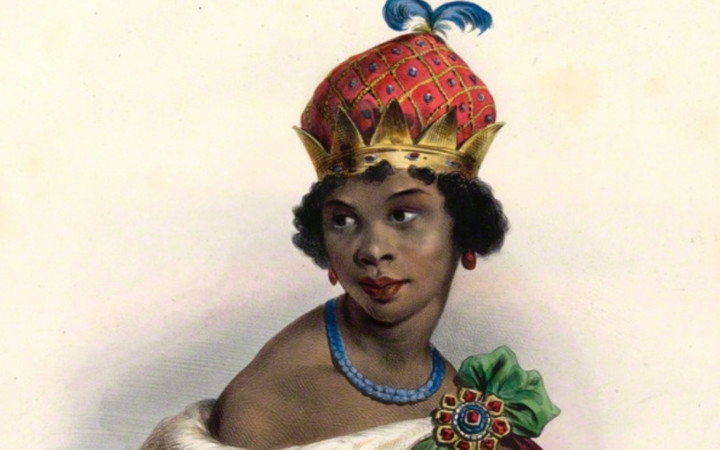Today’s Wonder of the Day was inspired by WonderTeam. WonderTeam Wonders, “Who was Queen Nzinga?” Thanks for WONDERing with us, WonderTeam!
How many famous queens can you name? Our Wonder Friends who enjoy history might think of Elizabeth I. Others may jump to Cleopatra or Amanirenas. Or perhaps you think of another great queen—one who was a great leader, negotiator, and protector. Who are we talking about? Queen Nzinga, of course!
Who was Queen Nzinga? You may also see her name spelled Njinga. She was born in 1583 to the king of the Ndongo people. At that time, they lived in Luanda. This was part of the region of Africa called Angola today. As a child, Nzinga proved to be intelligent and charismatic.
When Nzinga’s father died, her brother took over as ruler. His name was Mbandi. He was known to be a cruel king. For example, Mbandi killed Nzinga’s son because he considered him a threat to his rule. As a result, Nzinga and her husband fled Ndongo.
Years later, Mbandi found that he needed Nzinga’s help. His kingdom was under attack by Portugal. Portuguese colonizers targeted the Ndongo people, looking for those they could kidnap and enslave. Portugal also believed there were silver mines in the region.
Mbandi knew Nzinga was a skilled negotiator. That’s why, in 1623, he asked her to meet the Portuguese leaders. Nzinga agreed. She met Governor Joao Corria de Sousa in the nearby Portuguese settlement.
When she arrived, Nzinga noticed something odd. There was only one chair in the meeting room—and it was for Corria de Sousa. He expected Nzinga to either sit on the floor or remain standing. Either way, the message was clear—Corria de Sousa did not see Nzinga as his equal.
In response, Nzinga motioned to one of the Ndongo people who accompanied her. This person lowered to their hands and knees. Nzinga sat on their back, at an equal level with Corria de Sousa.
Nzinga’s goals in this meeting were complicated. She wanted to stop the Portuguese from kidnapping her people and selling them in the slave trade. However, she also did not want to worsen Ndongo relations with Portugal. The nation traded with the Ndongo and provided them with weapons.
In the end, Nzinga and Corria de Sousa made many compromises. Nzinga agreed to convert to Christianity. She also agreed to allow Portuguese missionaries and slave traders among the Ndongo for a short period of time. In return, the Portuguese abandoned a fortress on Ndongo land. They also released several chiefs they had taken as prisoners.
In 1624, Nzinga’s brother died and she became queen. By 1626, though, the Portuguese had gone back on their word. They recognized a different person as the Ndongo leader—a man who aligned with Portugal’s mission. The Portuguese continued to raid Ndongo lands, capturing people and selling them into slavery.
Nzinga and those loyal to her fled west. They founded a new state called Matamba. There, Nzinga welcomed people who had escaped enslavement and others wronged by the Portuguese. However, she also allied with the Netherlands, another nation involved in the slave trade.
In 1641, Nzinga’s forces were temporarily able to push the Portuguese out of Ndongo. They did so with help from the Netherlands. However, the Portuguese returned and retook control in 1648. Nzinga then focused on building her power in Matamba. Over the next two decades, Matamba became a well-established state that negotiated on equal footing with European powers.
Nzinga lived to the age of 81, dying in 1663. Her sister, Kambu (Lady Barbara), succeeded her as ruler. Today, Nzinga is remembered as a queen who stood up to European colonizers and did her best to protect her people from the evils of the Atlantic Slave Trade. The trading of enslaved people ended in Angola in 1836.
What do you think of Queen Nzinga’s legacy? What might you have done in her place? Consider other famous queens you’re familiar with—what made them similar to or different from Queen Nzinga?
Standards: CCRA.R.4, CCRA.L.3, CCRA.L.6, CCRA.R.10, CCRA.R.2, CCRA.W.1, CCRA.SL.1, CCRA.L.2, CCRA.R.3, CCRA.SL.2, CCRA.L.1




